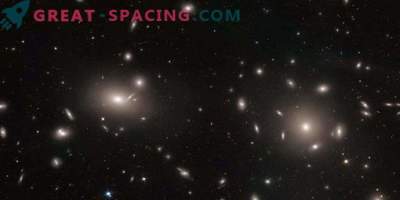
Astronomers may have discovered a signal from dark matter - a mysterious and elusive substance, which scientists believe is the largest part of the material Universe.
During the processing of data collected by the telescope of the European Space Agency's XMM-Newton spacecraft, a team of researchers noticed a strange burst of X-rays coming from two different celestial objects - the Andromeda galaxy and clusters of galaxies in Perseus.
The signal corresponds to an unknown particle or atom. Thus, it can be assumed that the first dark matter recordings were made.
"The distribution of the signal within the galaxy is exactly what we expected from dark matter, that is, the concentration in the center of the object and its attenuation along the edges," said study co-author Oleg Ruchaisky, from the Federal Polytechnic School of Lausanne in Switzerland.

Mass distribution in the universe
"In order to verify, we did a re-analysis of our galaxy data, the Milky Way, and obtained identical results," added lead author Alexei Boyarsky from Leiden University in the Netherlands.
Dark matter is so called because it does not absorb or emit light and therefore cannot be directly observed. But astronomers know that dark matter exists, as it gravitationally interacts with “normal” matter, which we can see and touch. Observations on the dynamics of stars and galaxies show that about 80 percent of all matter in the Universe is dark matter, which has a gravitational effect, but does not interact with light.
Researchers have proposed a number of different exotic particles as components of dark matter, including weakly interacting massive particles (wimps), axions and sterile neutrinos — hypothetical cousins of “ordinary” neutrinos (these are particles that resemble electrons, but have no electric charge).
The decay of sterile neutrinos is believed to produce x-rays, so the research team suspects that these may be dark matter particles responsible for the mysterious signal coming from Andromeda and the Perseus cluster.
"If the results, which will be published next week in the journal Physical Review Letters, are confirmed, we will enter a new era in astronomy," members of the research team said.
"Confirming this discovery could lead to the construction of new telescopes specifically designed to study signals from dark matter particles," said Boyarsky. "We will know where to look in order to trace the dark structures in space and will be able to recover how the Universe formed."











































